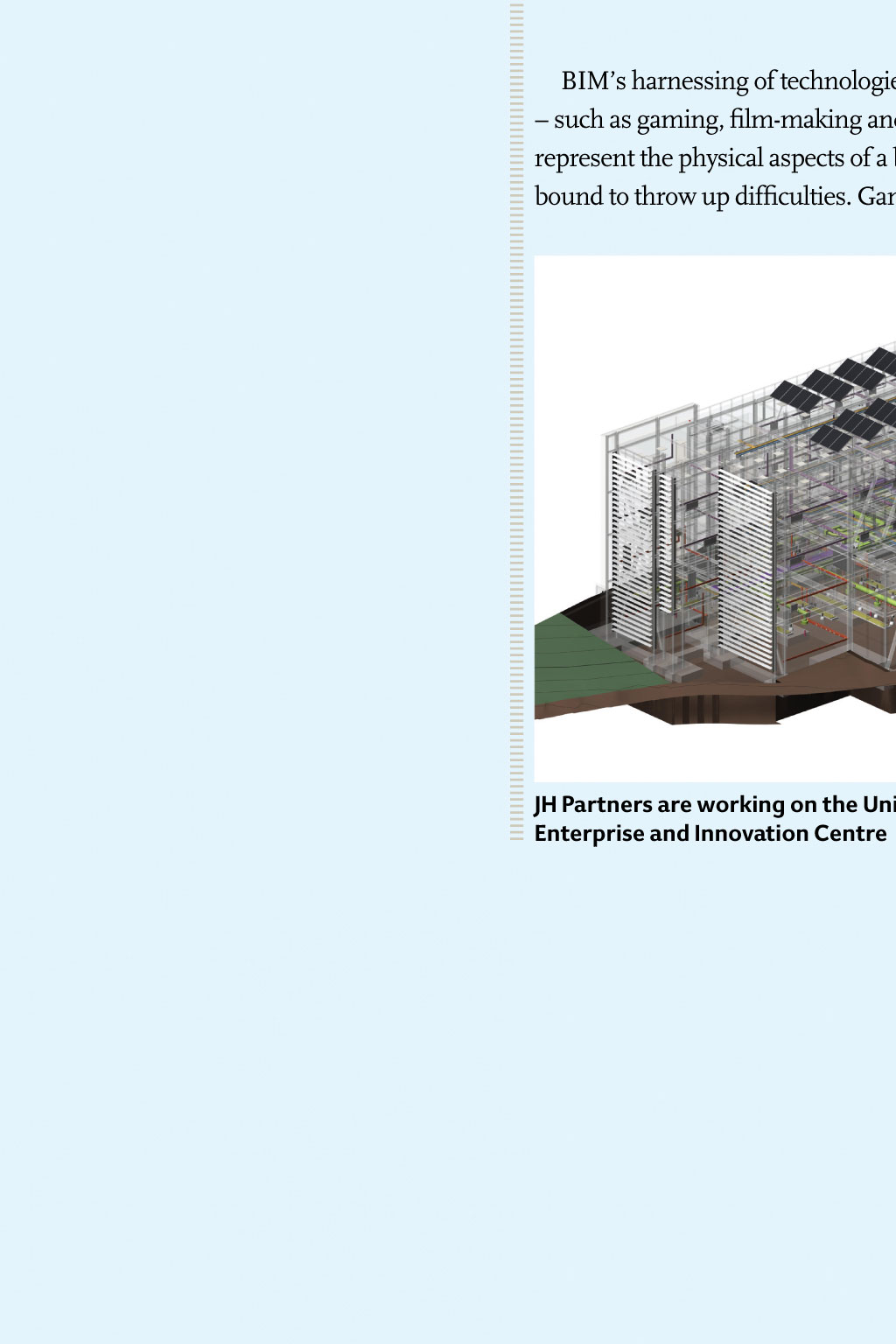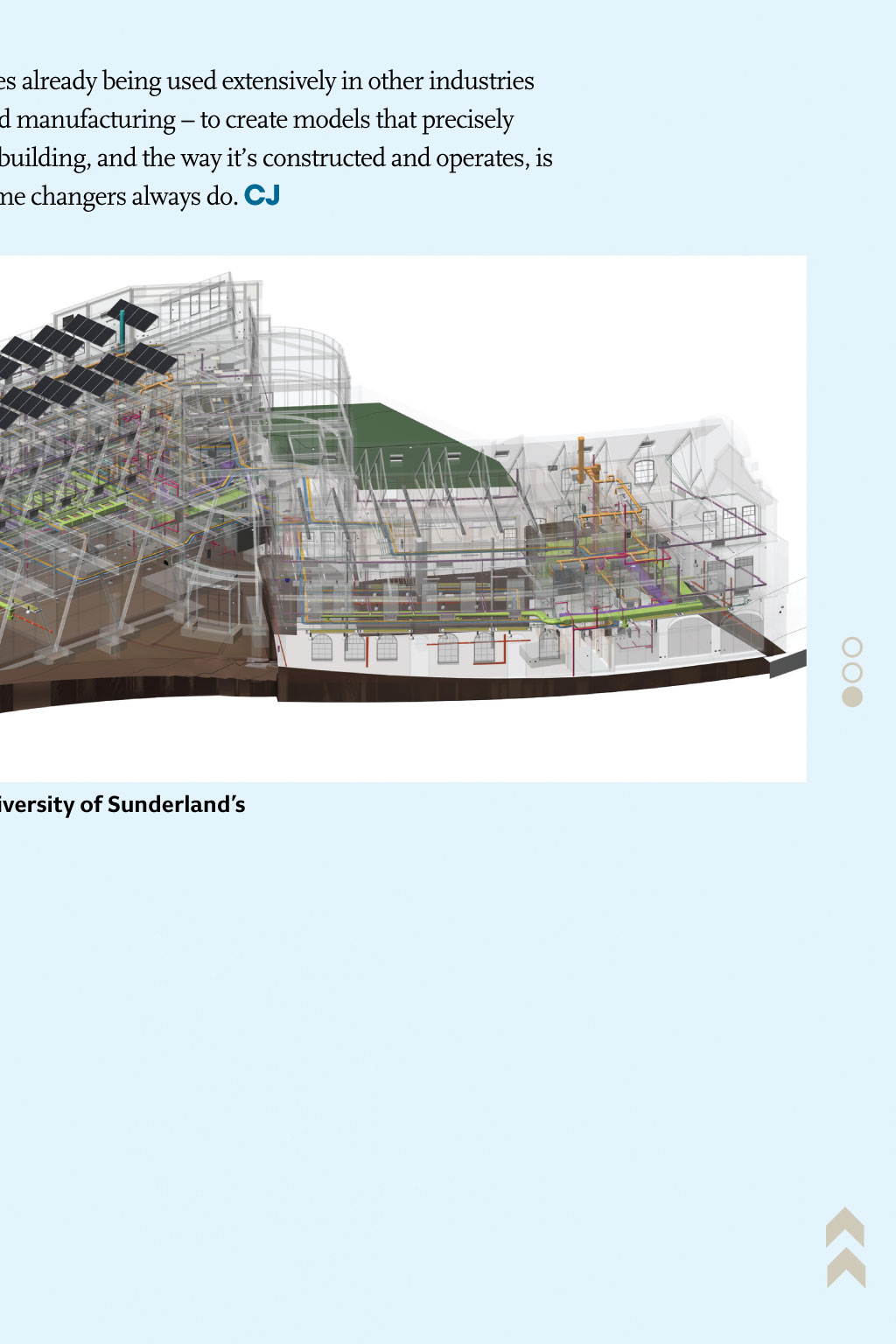












"oPiNioN are you PLayiNG the BiM GaMe, or raiSiNG it? BIM has the potential to revolutionise the construction sector but, says JH Partners director Craig Jordan, M&E designers have to be involved early in the design stage to maximise its impact Craig Jordan is director at JH Partners www.jhpartners.co.uk I am all for discussing the topic that is having such a huge impact across the construction sector, but would prefer people to be honest rather than simply pay lip service to it Everywhere you look, companies are crowing about their success in embracing building information modelling (BIM). While I am a firm believer in the value of improving design and construction methods by creating virtual building prototypes, I dont believe things are going as well as is being suggested. Theres no doubt BIM has the potential to revolutionise the industry; currently, however, its not working for everyone in particular, mechanical and electrical engineers. The baseline for BIM is the ability to share modelling data and, despite spending the past five years developing our in-house expertise to the highest levels, we still have compatibility and integration challenges with our other engineering design software. The BIM platforms that our lead designer clients are using do not readily bolt together with our M&E design software. In effect, therefore, we are modelling projects three and four times. This is a rather fundamental issue, and I dont understand why more building services engineers are not speaking out about it. Only by raising the problems will we find a solution. We have taken a number of opportunities to highlight our plight, including hosting cross-party meetings with equipment manufacturers, architects, contractors and clients, attending workshops and entering competitions. It is through the latter that the most progress has been made as team collaborators were able to see our technological frustrations first-hand they could really feel our pain. Working together, against the clock, on a live BIM construction project clearly demonstrated the need for open dialogue to bridge the gaps until properly joined-up information systems are available. Collaboration is, of course, another key facet of BIM and one that we also feel needs further work. The M&E disciplines are, more often than not, invited late to the design party, but for BIM to be achieved this has to change. Integration at the outset is something that may have seemed unnecessary and time consuming in the past, but it will reap significant benefits under BIM as projects progress. Agreeing project-delivery methods at the earliest stages ensures a coordinated and consistent approach. We have always pushed for early involvement and are now pushing that bit harder. Gearing up for this new way of working while keeping a busy engineering consultancy running smoothly requires a considerable leap of faith. Working protocols are being re-evaluated and there is much investment in time and resources. Additional technology is being integrated, staffing levels have been increased to facilitate the extra work, and personnel are being trained. Many small to medium-size companies in the sector are finding the investment required prohibitive, especially against a backdrop of ever-tighter project budgets. While I am keen to air the challenges, I think it is important to remember that pursuing BIM isnt just about pain without any gain. M&E companies that embrace BIM will, like us, see significant improvements in the quality of their work, Im sure. For example, there hasnt been much talk about the higher standards of modelling now being aimed for and achieved. BIM requires greater accuracy and detailing; where, previously, 3D models may have included representational images, now precise, design-rich information is being produced. Being part of this evolution has to be worth striving for. Greater understanding about the M&E arena is also very welcome. Until these early stages of BIM adoption, there had been little real comprehension about the workings of our sector. For many, it seems confusing and multiskilled, but the benefits of collaboration and detailed visualisations are making what we do much clearer. Those involved in the initial building design, right through to those who manage and maintain it, will be able to see each individual element of this design correctly modelled in three dimensions, with exact details. Being able to share this level of data simplifies and contextualises our work. BIMs harnessing of technologies already being used extensively in other industries such as gaming, film-making and manufacturing to create models that precisely represent the physical aspects of a building, and the way its constructed and operates, is bound to throw up difficulties. Game changers always do. cJ JH Partners are working on the University of Sunderlands Enterprise and Innovation Centre